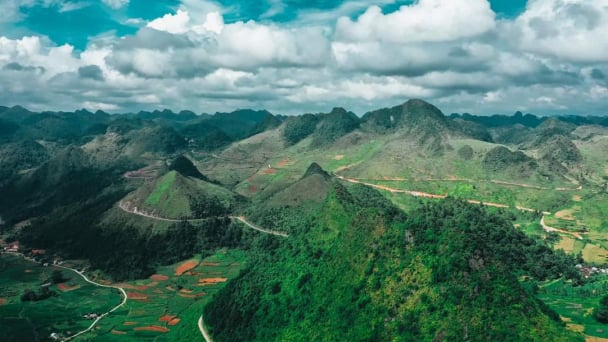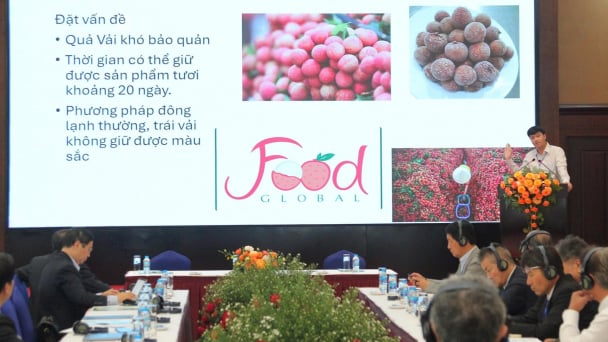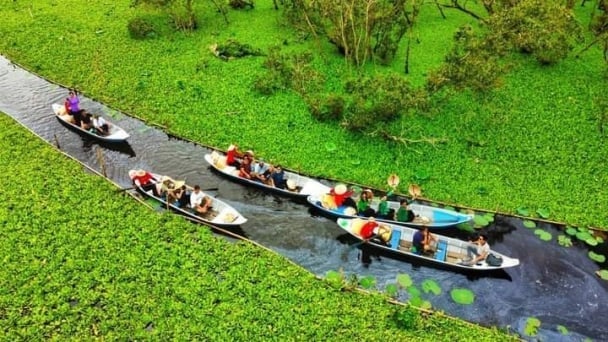June 17, 2025 | 11:23 GMT +7
June 17, 2025 | 11:23 GMT +7
Hotline: 0913.378.918
June 17, 2025 | 11:23 GMT +7
Hotline: 0913.378.918

2.5 million Mebi One shrimp larvae have been exported to the Taiwan, China market
According to the Vietnam Association of Seafood Exporters and Producers (VASEP), as of the end of August 2024, most of Vietnam's major seafood export products have recorded positive growth compared to the same period last year. Notably, among the top 5 products with the most breakthrough growth, the volume of exported lobsters increased 30-fold compared to the same period last year.
For shrimp products alone, the total export value for the first 8 months of this year reached more than $ 2.4 billion, a 10% increase compared to the same period last year.
In August this year, shrimp exports continued to record double-digit growth in most major consumption markets such as the US, China, and the EU.
Reduced inventory and increased demand for imports to serve year-end holidays have led markets to boost shrimp imports. Additionally, the price of raw shrimp from producing countries worldwide, including Vietnam, is trending upward, positively impacting shrimp export prices.
However, according to Mr Truong Dinh Hoe, General Secretary of VASEP, processed shrimp exports continue to face many challenges due to the impacts of the Russia-Ukraine conflict, the global economic crisis, high inflation in major export markets, technical barriers for imported shrimp, price competition with India and Ecuador, rising sea freight costs, complicated disease developments in farmed shrimp, high shrimp production costs, and the risk of raw material shortages...
Mr Truong Dinh Hoe emphasized that although the shrimp industry has experienced positive growth in the first months of 2024, this does not fully reflect the simultaneous difficulties across all major markets such as the US, EU, Japan...
In this context, many businesses are also exploring new directions for developing the shrimp industry. Instead of producing processed shrimp, businesses have invested in technology to produce shrimp larvae for export.
For instance, in Quang Nam province, there are currently more than 2,000 hectares of whiteleg shrimp farming, requiring more than 3 billion larvae to meet annual production demands. Due to this large demand, Quang Nam has established and put into operation an aquatic breed production and testing area. Additionally, the locality has created favourable conditions to help businesses invest in shrimp larvae production.
On September 23, Kim Hoang Quang Nam Aquatic Breeds Joint Stock Company held a ceremony to hand over a shipment of 2.5 million Mebi One shrimp larvae to the partner YONG SING SEAFOODS CO., LTD for export to the Taiwan, China market.
The export of 2.5 million Mebi One shrimp larvae to Taiwan, China marks a significant milestone in Vietnam's shrimp larvae production industry.
After more than a year of field trials at shrimp farms in Taiwan and China, Vietnam's shrimp larvae have met the development criteria and expectations of farm owners. Based on this, Kim Hoang Quang Nam JSC and the partner reached an agreement and officially signed commercial cooperation to develop Mebi One shrimp larvae in the Taiwan, China market.
In the first order, 2.5 million "made in Vietnam" shrimp larvae, valued at $ 11,000, will be shipped to the Taiwan, and China markets. In subsequent years, the export value of shrimp larvae from this company to this market could reach $ 300,000.
Shrimp is the leading product in seafood exports and has a long-standing, experienced business force in international trade. However, to sustainably produce and export shrimp, the industry must address many current barriers to its development.
According to Mr. Le Van Quang, General Director of Minh Phu Seafood Corporation, a leading exporter in the seafood industry, many challenges for Vietnam's shrimp industry have been highlighted.
In 2023, Vietnam's shrimp production sharply declined by 32%, while Ecuador increased by 14%, India by 2%, Thailand by 9%, and Indonesia by 12%. The price of processed shrimp dropped significantly due to economic recession and tighter consumer spending.
Mr Quang identified five main challenges in the shrimp industry and agriculture in general: planning and management policies for breeding; farming methods; water supply and drainage systems; biological agricultural materials; professional shrimp farming and processing industrial zones, agricultural trade centres, logistics, and product distribution.
Proposals to enhance the competitiveness of the shrimp industry and promote sustainable and efficient agricultural development
Mr. Le Van Quang suggested a shift in thinking—rather than chasing production volume, and high technology (quantity), there should be a focus on sustainability and efficiency (quality, environment, health, and selling price). Several key proposals were presented by Mr. Quang at the Government Standing Committee’s meeting with businesses on solutions to contribute to the country’s socio-economic development (September 21):
The Ministry of Agriculture and Rural Development (MARD) should research and propose amendments to regulations on shrimp breeding production; allowing large shrimp farming enterprises to domesticate and select breeds following natural selection to produce disease-resistant shrimp adapted to the weather, climate, and environment of each farming region.
Aquaculture and farming should follow biotechnology in line with the environmental carrying capacity, be environmentally friendly, and reduce carbon emissions.
There should be support for Vietnamese businesses to apply and develop biological fertilizers, animal feed, and biological products for livestock and crops. The agricultural sector should implement a circular economy approach, turning agricultural waste, by-products, and residues into valuable products that return to serve sustainable agricultural development.
Investment should be made in developing urban industrial zones; professional aquaculture industrial zones, especially integrated complexes that include processing industries linked to farming and urban residential utilities, trade centres, logistics, and agricultural product distribution systems.
Translated by Hoang Duy

(VAN) The UNESCO Global Geopark revalidation of Non nuoc Cao Bang and the transition to a two-tier administrative model are presently undergoing a pivotal moment in Cao Bang, the northernmost province of Vietnam.
/2025/06/13/5330-2-004539_953.jpg)
(VAN) Changing policy mindset and removing investment barriers are urgent requirements to open up new development space for enterprises in the agricultural sector.

(VAN) The areas include the restoration of five million hectares of marine ecosystems.

(VAN) Dr. Le Van Nguyen, Director of the Institute of E-Commerce Management (ECM), emphasizes the potential for green development through the cultivation of fruit trees, particularly in provinces such as Son La.

(VAN) VAAS and numerous Vietnamese enterprises have signed cooperation agreements with Japanese partners to promote agricultural technology and trade connectivity.
/2025/05/29/5625-12-214801_567.jpg)
(VAN) Provincial mergers in the Mekong Delta promise to streamline administration, expand inter-provincial raw material areas, and foster close linkages in agricultural value chains, benefiting both businesses and cooperatives.

(VAN) Merging Mekong Delta provinces contributes to the expansion of agricultural raw material areas, addressing previous constraints caused by provincial boundaries. Additionally, this expansion will reduce costs and strengthen linkages between businesses, cooperatives, and farmers.